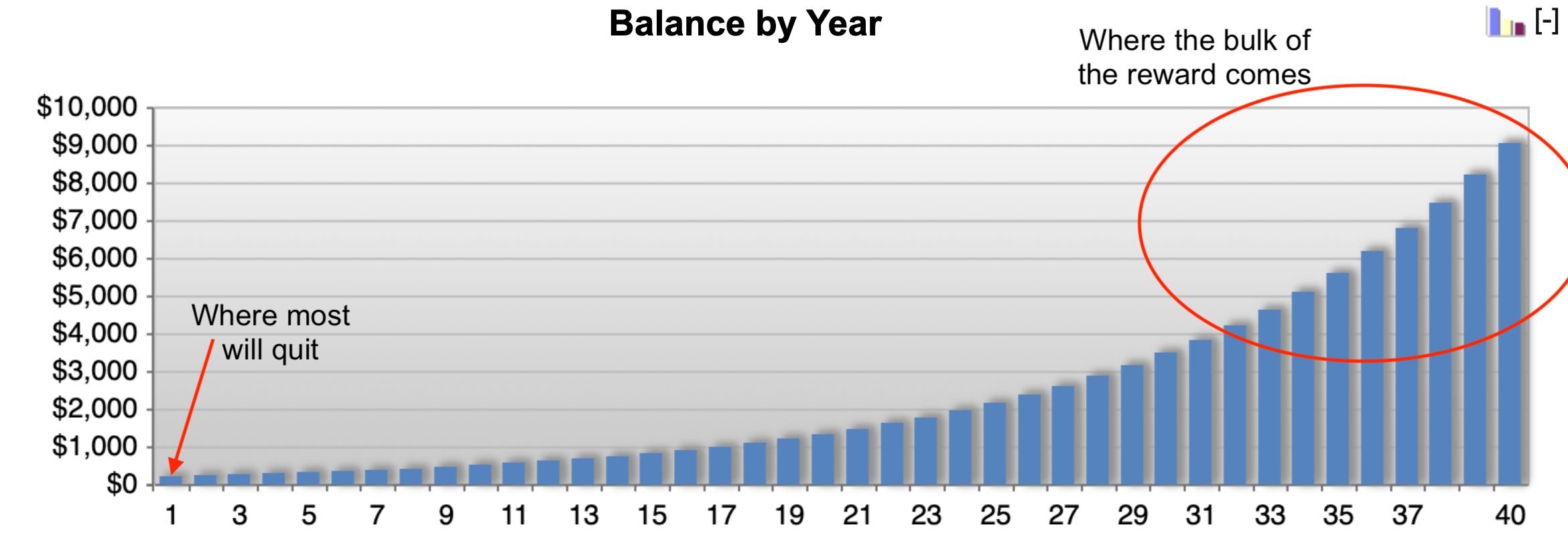Many want to break free from corporate life. With digital technologies, scaling a company is easy if you’re able to break through and develop a large audience.
But it’s also intimidating. How do you become a top creator when you have millions of blog posts and millions of hours of video uploaded to YouTube each day?
But like many ventures, it’s important to note that results don’t come instantly. And when someone is dedicating hours and hours to something without immediate rewards (and rewards that may be very far off) it can be difficult to stick with it.
Did you know that you just need 21 podcasts episodes to be in the top 1% of all podcasts?
There are 2 million podcasts.
But 90% of podcasts don’t get past episode 3.
Of the 200,000 left, 90% of those will quit after 20 episodes. So if you’re starting a podcast, your competition is not the 2 million podcasts. But just the 20,000 that don’t quit.
And if you’re thinking about starting a venture in a crowded space, such as a blog, YouTube channel, or a newsletter, this post will show you why you shouldn’t care all that much about the competition.
But well, you should already get the drift: People quit too easily.
Let’s check things out further.
Table of Contents
Lag and lead metrics
Creative success is about lag and lead metrics: What does that mean?
- Lag metric: Joe wants to be a novelist.
- Lead metric: He wrote for two hours every day before going to work.
Once you have established your lag metric, figure out what it takes to be in the top 10% or so of your niche. And reverse engineer the process to understand your lead metric.
How do you make sure to not quit?
Figure out the obstacles you’ll get along the way to success.
Moreover, while banal, you need to have passion. What would you do in life if you didn’t need money or already had all the money you needed?
While it’s not always practical, making your work and passion one and the same is ideal. Business is about solving problems. If you can solve a problem for yourself that’s a great reward even if it’s never as commercially successful among others as you might have hoped.
It’s important to visualize your goals and the outcome. But positive thinking is far from reality. Life isn’t as sweet as it looks in your head. And this is why positive thinking alone makes it easier to quit.
Below is a rough outline to fight against positive fantasizing.
- Wish: Which goal do you want to achieve?
- Outcome: What will you do when you achieve the goal?
- Obstacle: What are your main obstacles to achieving it?
- Plan: How are you going to overcome the obstacles?
Will not quitting guarantee you success? Unfortunately not, but it’s the starting point to achieve it.
Comparison can be deadly
Many bloggers and YouTubers advertise what they make. It can be inspiring to hear that some of your favorite creators are making anywhere from incomes that can support their living expenses all the way up to millions of dollars per year.
That can be inspiring but disheartening at the same time, especially when you’ve yet to begin or are in the early stages of barely making anything.
But also realize that it’s not a good thing to compare someone in Chapter 1 to somebody who’s in Chapter 4 or Chapter 10.
Let it be motivating, but don’t let it evoke adverse emotions that can have the opposite effect, such as motivating you not to begin in the first place.
Conclusion
Starting anything worthwhile takes a lot of time, care, and attention. Focus over an elongated time period is key.
If you look at the top image to this post, it’s compound interest of 10% over 40 years. In order to get to the fruits of all that labor, that’s a lot of work and it will take delayed gratification along the way.
Most will quit in the first year of anything that’s difficult.
The longer you wait the more that timeframe is pushed back. And at a certain point, it can become out of reach.


